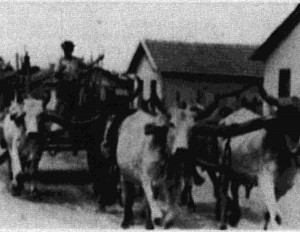
"This travelogue of Belo Horizonte in Brazil contrasts modern cities with primitive roads and countrysides. The narration is excellent and the film has a well developed musical score." PSA Journal, Nov. 1956, 45.
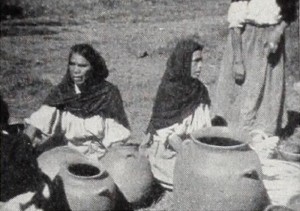
"Ella Paul did not try to cover the whole of Mexico, as do so many who visit that fascinating country. In fact she chose to limit her study to one small locale — the town of Patzcuaro and the activities on its lake. This primitive yet industrious community is recorded in pleasing compositions and with sympathetic appreciation of its sunny warmth and charm. The familiar butterfly nets, dugout canoes and the heroic statue of Morelos are all there in Beneath Mexican Skies; but Mrs. Paul's camera gives them a fresh treatment." Movie Makers, Dec. 1950, 466.
"Among the pictures awarded Honorable Mention is Bermuda, the Floating Gardens, a color travelog of that island, another of the competent publicity pictures made by Konstantin T. Kostich. ACL, which make the audience yearn to buy a steamship ticket and set sail. Mr. Kostich has mastered the art of this appeal, and Bermuda, the Floating Gardens is one of the best examples of his genius. Here are shown glimpses of the comfort of the ship, the colorful beauties of the island and some of the recreational facilities that are offered. There is splendid color photography throughout and numerous examples of cinematic decor which enliven the work but which do not detract from the film's primary purpose. Notable are such things as the shadow of the horse and carriage moving along the warm colored stone wall and a cleverly planned composition of a winding road banked with brilliant flowers. It would be dangerous to look at this picture around February." Movie Makers, Dec. 1935, 550-551.
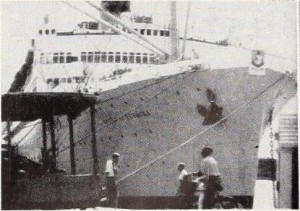
"One rarely thinks of a portrait of a place; but Bermudiana is in essence just that. Helen C. Welsh has a perceptive eye for beauty, an affection for her subject and a trained, technical knowledge of her craft. This triple-threat combination has recorded not only the justifiably famous surface aspects of these enchanting islands, but it has revealed as well much of their inner spirit. The film has all the attractions of a first rate travelog and the informative qualities of an honest documentary. Its accompanying narrative complements perfectly the flow of pictorial material, providing supplementary information without piling up facts and figures simply for their own sake. A happy choice of musical background furnishes the final touch to a rich and well rounded presentation." Movie Makers, Dec. 1951, 410.

"Attempting to film a large city with its huge skyscrapers and teeming population through the lens of an 8mm. camera would seem to be an almost overwhelming task. However, boldly tackling such a gigantic project, Richard Guetl in his entry, The Big City, proves it can be done. This competent photographic work presents a good, clear coverage of Chicago, where Mr. Guetl resides. His angles are interesting and compositions pleasing. His street shots around the Loop and his camera treatment of the human derelicts on Skid Row are worthy of special commendation. While The Big City is not an epic, it is a capable, factual presentation with just enough skyscraper shots to make it authentic, enough stores and people to give it pulsating life, and enough pathos to arouse the emotion." Movie Makers, Dec. 1952, 340-341.
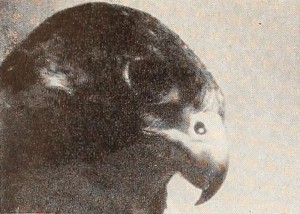
"You wouldn't think that just one movie maker could shoot all this footage (2400) on birds — no matter how interested and informed he was on the subject. And if that was the way you felt, you would be dead right. For Birds of Washington is the joint work of two men, J. Don Sutherland and Ralph E. Lawrence, who, because they customarily screen their films together, chose to submit them as one contest entry. Both, in any case, are highly competent movie makers and soundly informed students of bird life. For example, they preface briefly each new subject grouping with a pictorial survey of the type of terrain in which the birds will be found. Makes the film that much more informative. Outstanding, in our recollections, are their sequences on the American bald eagle and on an owl — whose family tree we regret we cannot recall." Movie Makers, Dec. 1952, 340.
"The Black Cat is a 25-minute version of Edgar Allen Poe's story by the same name and concerns a man who does away with his wife in what he believes to be the perfect crime, only to be outdone in the end by the family black cat. This low key, well dramatized version is the only 8mm film among the top ten and also received the MPD Scenario Film Award" PSA Journal, Sept. 1965, 50.
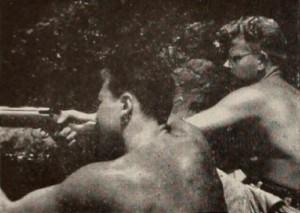
"It takes a true craftsman to catch all the intimate and informal scenes that make a first rate vacation film, particularly when his exposure problems are complicated by the sunlight and shadows of a thickly wooded lake shore. But George Mesaros has succeeded in producing the sort of vacation record that most filmers only dream about. Mr. Mesaros has mastered his technical problems with an expert's hand and has turned out a stunning, vital movie of a summer outing in the Saranac Lake region. Faced with non-cooperative fellow campers, he had to be prepared to set up his tripod at a moment's notice; but the candid air of the proceedings on the screen is ample recompense for his vigilance. Bluff Island Idyll is a vivid testament to the importance of human interest and to the appeal of simple, everyday activities when they are properly sequenced and edited." Movie Makers, Dec. 1947, 513.
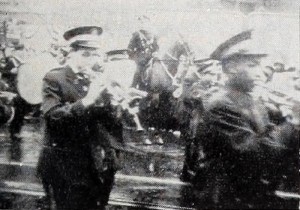
"Donald Volkman's film, A Breath of Spring, is a montage study of the vernal season in a city — in this case, Boston. But shots of the blowing skirt of a girl, the wind-whipped awning of a department store and the clothesline ballet of the Monday wash are universal. Mr. Volkman has truly brought imagination to his pictorial progression of spring, from melting snows in a churchyard to the full flowering of the sun-warmed earth and its people. His choice of musical accompaniment is especially notable, particularly with shots of running water in gutters and the Boston Pop's rendition of The Wearing of the Green with the sequence of a St. Patrick's Day parade. A Breath of Spring was created as a thesis in a course on motion pictures at Boston University, where Mr. Volkman is a student." Movie Makers, Dec. 1951, 411.
Total Pages: 37